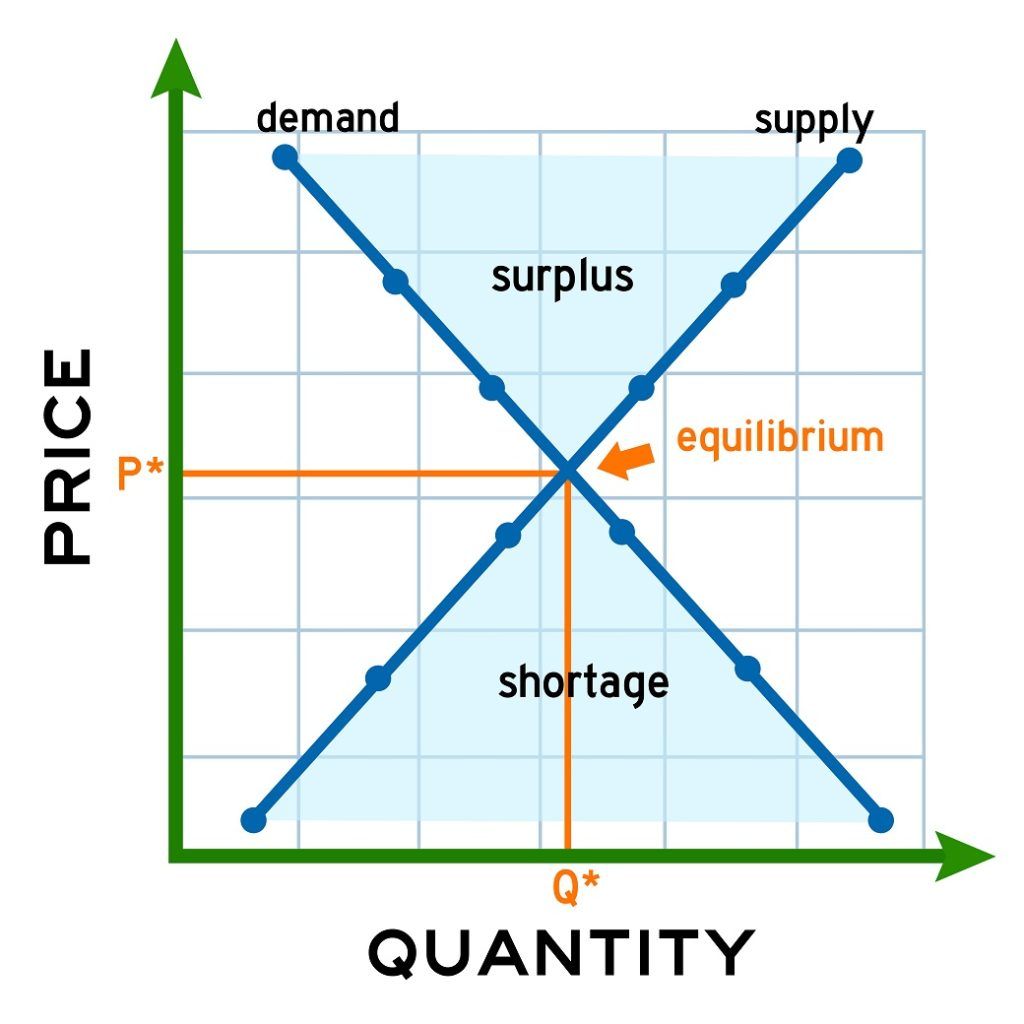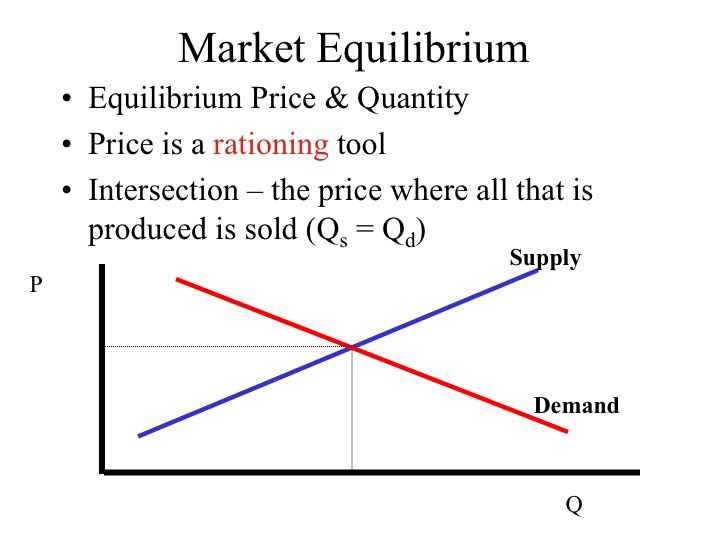How Do Price Changes Drive Markets Toward Equilibrium
Equilibrium price is a phenomenon that is always affected by demand and supply. Equilibrium price is the price where demand and supply for a good or service is equal.

Equilibrium Quantity Overview Supply And Demand Example
Think about the shift variables for demand and the shift variables for supply.

. If the market price is above the equilibrium price then there is an excess of the good that causes the market price to dropfall. Transition to a new equilibrium In many cases we see shifts in both demand and supply - in which case the final effect on price and quantity depends on the direction of the shifts in the curves and also the scale of the changes. How does the market move toward equilibrium.
As they do the market price will rise toward the level where the quantity demanded equals the quantity supplied just as a balloon will expand. They increase or decrease supply or demand is the one way among the following choices given in the question that drive markets toward equilibrium. Markets tend toward equilibrium unless there are barriers called price controls that prevent reaching equilibrium.
They set new price floors and ceilings. Here is an example in the analysis diagram below. And then think about what that might do to the equilibrium price and equilibrium quantity.
Some factors such as the rate of inflation have the power to move the market. They ensurethat prices are fair. The price changes drive markets toward equilibrium because they increase or decrease supply or demand.
Once the market reaches its equilibrium all buyers and sellers are satisfied and there is no upward or downward pressure on the price. Which is a real-life example of a market that is. When that occurs market forces push the price downward toward equilibrium increasing Qd and decreasing Qs until the surplus is eliminated.
As prices rise the market once again moves toward the equilibrium. Price changes drive markets toward equilibrium by the increase or decrease supply and demand. How do price changes drive markets toward equilibrium.
They ensure that prices are fair. So lets say at some period this is what the supply curve looks like and this is what the demand curve looks like. They ensure that prices are fair.
If the market price is above equilibrium quantity supplied will be greater than quantity demanded. The determination of the market price is the central. Demand shifts to the right Demand shifts to the left A decrease in demand shifts the demand curve to the left and reduces price and output.
Market price is the economic price for which a good or service is offered in the marketplace. They set new price floors and ceilings. Thus the activities of the many buyers and sellers automatically push the market price toward the equilibrium price.
They prevent inflation or deflation. Technically at this price the quantity demanded by the buyers is equal to the quantity supplied by the sellers. Graphically this is represented by the intersection of the demand and supply curve.
Equilibrium will now be re-established at the higher price. How do price changes drive markets toward equilibrium. The behavior of sellers and buyers naturally drives markets toward their equilibrium.
They set new price floors and ceilings. Further it is also known as the market clearing price. They set new price floors and ceilings.
Using this diagram find the initial equilibrium values for price and quantity. If the market price is beneath equilibrium price then there is a shortage that causes the market price to increase. They increase or decrease supply or demand.
I hope that this is the answer that has come to your help. Markets Not in Equilibrium. Supply Demand If there is a binding price ceiling there will be a shortage in the market.
Not every market clears immediately. They increase or decrease supply or demand. They increase or decrease supply or demand.
Because the market price of 250 is above the equilibrium price the quantity supplied 10 cones exceeds the quantity demanded 4 cones. How do price changes drive markets toward equilibrium. Suppliers try to increase sales by cutting the price of a cone and this moves the price toward its equilibrium level.
They ensurethat prices are fair. 49 rows If there is a shortage firms will put up prices and supply more. The correct option among all the options that are given in the question is the second option or option B.
Draw demand and supply curves showing the market before the economic change took place. Assuming it is a free market without any restraints the laws of supply and demand will drive the price and quantity demandedsupplied to the equilibrium point. In panel a there is a surplus.
Correct answer to the question How do price changes drive markets toward equilibrium. Shift in demand and supply. Both market forces of demand and supply operate in harmony at the equilibrium price.
Market price may be affected by a number of factors depending on each industry. The law of supply and demand holds true as in any market. They prevent inflation or deflation.
If there is a binding price floor there will be a surplus in the market. What I want to do in this video is think about how supply andor demand might change based on changes in some factors in the market. They prevent inflation or deflation.
One price control is called a price floor which is a barrier that holds prices above the equilibrium price. They increase or decrease supply or demand. An increase in demand shifts the demand curve to the right and raises price and output.
Buyers will respond by bidding up the price and before you know it the price is rising toward the equilibrium point. There are four basic causes of a price change.

Market Equilibrium Disequilibrium And Changes In Equilibrium Article Khan Academy

Comments
Post a Comment